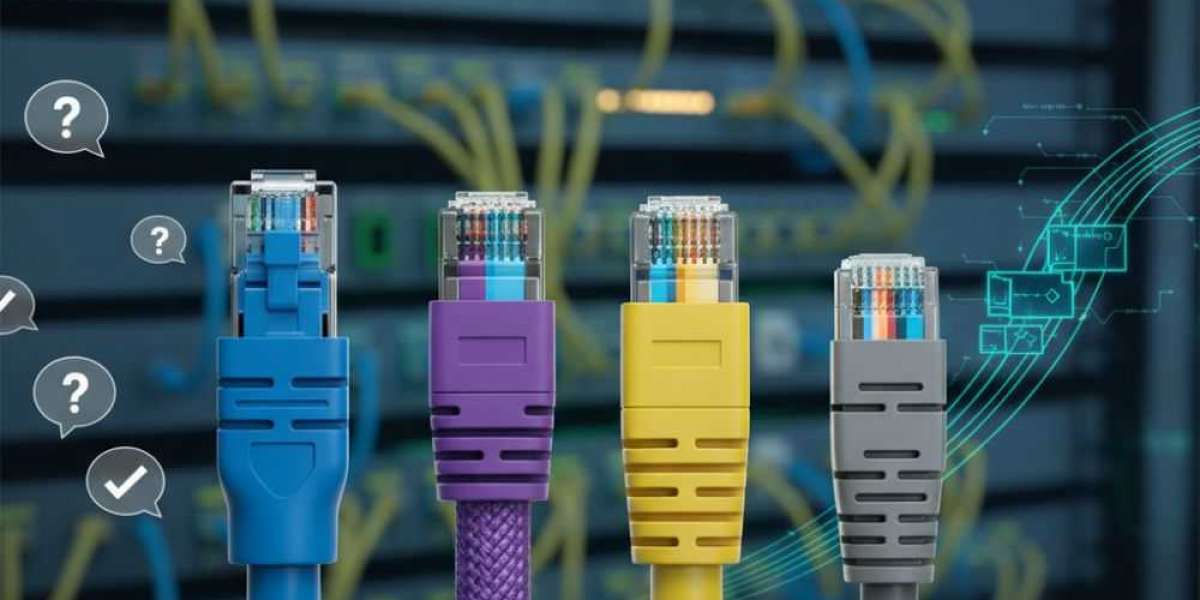When you're setting up your home network or upgrading your internet connection, one question always pops up: which ethernet network cable should you use? With so many options available, it's easy to feel confused. But don't worry – choosing the right cable doesn't have to be complicated.
In this guide, I'll walk you through everything you need to know about network cables. By the end, you'll understand which cable works best for your specific situation.
Why Your Cable Choice Matters
You might think all ethernet network cables are the same. After all, they look pretty similar, right? But using the wrong cable can seriously limit your internet speed and network performance.
Imagine paying for gigabit internet but only getting a fraction of that speed because your cable can't handle it. That's like buying a sports car but filling it with low-quality fuel. You won't get the performance you paid for.
The right cable ensures you get the speeds you deserve. It also provides better reliability and can save you from future headaches.
Understanding Cable Categories
Ethernet network cables come in different categories, each designed for specific speeds and uses. Let's break down the most common ones you'll encounter.
Cat5e Cables
Cat5e stands for Category 5 enhanced. This is the minimum standard you should consider today. These cables support speeds up to 1 Gbps (gigabit per second) and work well for distances up to 100 meters.
Cat5e cables work great for most home users. If you're streaming Netflix, browsing the web, or doing video calls, Cat5e handles these tasks without breaking a sweat. They're also budget-friendly, which makes them popular for basic setups.
Cat6 Cables
Cat6 cables are a step up from Cat5e. They support speeds up to 10 Gbps, but only for shorter distances (up to 55 meters). For longer runs, they perform at 1 Gbps, just like Cat5e.
The main advantage of Cat6 is better shielding against interference. If you have many electronic devices nearby or run cables close to power lines, Cat6 provides more reliable performance. Gamers and people who work from home often prefer Cat6 cables.
Cat6a Cables
The "a" stands for augmented. Cat6a cables support 10 Gbps speeds for the full 100-meter distance. They have even better shielding than Cat6, which means less interference and more consistent performance.
These cables are thicker and less flexible than Cat6. They also cost more. But if you're building a network that needs to last for years or you're running a small business, Cat6a is worth the investment.
Cat7 and Cat8 Cables
These are the premium options. Cat7 supports speeds up to 10 Gbps, while Cat8 can handle 25-40 Gbps. They come with excellent shielding and are built for professional data centers and server rooms.
For most home users, Cat7 and Cat8 are overkill. They're expensive and require special connectors. Unless you have very specific high-performance needs, you probably don't need these cables.
Factors to Consider When Choosing
Now that you know the different types, how do you pick the right one? Here are the key factors to think about.
Your Internet Speed
Check your current internet plan. If you have 100 Mbps internet, even a Cat5e cable will handle it easily. But if you have gigabit internet or plan to upgrade soon, go with Cat6 or higher.
Think about the future too. Internet speeds keep getting faster. Choosing a slightly better cable now means you won't need to replace it when you upgrade your service.
Cable Length
Measure the distance from your router to your device. For runs under 50 meters, most cables perform at their advertised speeds. For longer distances, pay attention to the specifications.
Remember that ethernet network cables lose signal over distance. If you need to run a cable through your entire house, choose a higher category to maintain good speeds.
Your Environment
Where will you run the cable? If it's going through walls near electrical wiring or in areas with lots of electronic interference, choose a cable with better shielding like Cat6a.
For outdoor installations, you need special weatherproof cables. Regular indoor cables will degrade quickly when exposed to sun, rain, and temperature changes.
Your Budget
Price matters. Cat5e cables cost the least, while Cat6a and higher can be significantly more expensive. For a home setup, the price difference might be just a few dollars. But if you're cabling an entire office, costs add up quickly.
Balance your current needs with future growth. Sometimes spending a bit more now saves you from having to redo everything later.
Device Compatibility
Check what your devices support. If your computer only has a 1 Gbps network card, buying a Cat8 cable won't make your internet faster. Your network speed is limited by the slowest component.
That said, buying a better cable than you currently need isn't wasteful. When you upgrade your devices, the cable will already be there to support them.
Practical Tips for Installation
Buying the right ethernet network cable is just the first step. Here's how to install it properly.
Don't bend cables too sharply. This can damage the internal wires and hurt performance. Keep bends gentle and use cable guides when needed.
Avoid running network cables parallel to electrical wires for long distances. This can cause interference. If you must cross an electrical cable, do it at a 90-degree angle.
Use the right length. Extra-long cables coiled up on the floor can pick up interference. Measure your run and add just a bit extra for flexibility.
Secure your cables properly but don't overtighten. Crushing the cable with zip ties or staples can damage it. Leave a little breathing room.
Common Mistakes to Avoid
Many people buy cheap, unbranded cables to save money. This often backfires. Low-quality cables might not meet their category standards and can cause frustrating connection problems.
Another mistake is mixing cable types without understanding the impact. Your network performs at the speed of its slowest cable. One Cat5 cable in a chain of Cat6a cables limits everything to Cat5 speeds.
Don't forget about your connectors and wall plates. These need to match your cable category. Using Cat6 cable with Cat5e connectors defeats the purpose of upgrading.
Making Your Final Decision
For most home users, Cat6 ethernet network cable offers the best balance of performance, price, and future-proofing. It handles current internet speeds easily and leaves room for growth.
If you're on a tight budget and have slower internet, Cat5e works fine. If you're setting up a gaming room, home office, or small business, consider Cat6a for its superior performance.
Remember that your network is only as good as its weakest link. Invest in quality cables from reputable brands. The few extra dollars you spend will pay off in reliable performance and fewer headaches.
Conclusion
Choosing the right ethernet network cable doesn't require a technical degree. Understand your internet speed, measure your distances, consider your environment, and pick the appropriate category.
Start with Cat6 if you're unsure. It covers most needs without breaking the bank. And remember, a good cable is an investment that will serve you well for many years.
Now you have the knowledge to make a smart choice. Your devices will thank you with fast, reliable connections!
Sources: https://adaptiveblogs.com/how-to-choose-the-right-networking-cables-for-your-needs/
https://www.florevit.com/read-blog/57898







